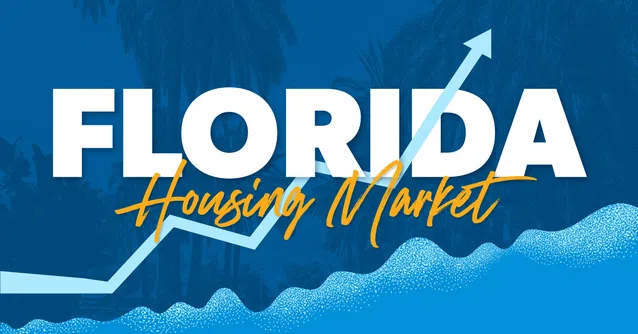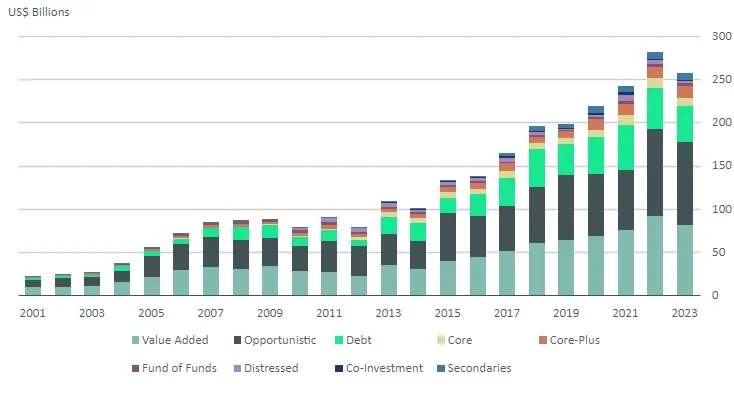A Beginner’s Guide To Commercial Real Estate Loans
The most relevant commercial real estate lending basics offer far more than the chance to develop key professional relationships and avoid tenancy issues that often coincide with residential rental properties; it offers lucrative income potential that can dwarf more traditional forms of real estate investing. However, as any commercial real estate investors will tell you, the trick isn’t always finding a commercial property, but rather acquiring one of those ever-essential commercial real estate loans that let you bring a property into your portfolio.
While many lending principles apply equally to both residential and commercial real estate loans, there are some key distinctions (and tricks-of-the-trade) about the commercial real estate loan process that can save you time and money, if understood before plunging ahead.
COMMERCIAL REAL ESTATE LENDING BASICS
Commercial property loans, not unlike their single-family counterparts, are the foundation of a great real estate investment. The loans are just as important as the assets themselves—if not more so. At the very least, there are many types of commercial real estate loans which award savvy investors with unique advantages for their particular situations. That said, it’s not enough for investors to simply take the first loan that comes across their table; they need to mind due diligence and get to know the ins-and-outs of commercial real estate loans before making any decisions. The more an investor knows about their own CRE loan and how it applies to their situation, the better.
Individuals Vs. Entities
It is commonplace for residential loans to be made to individuals. However, commercial real estate loans are usually made to entities. Otherwise known as business entities, entities can represent a number of business: corporations, developers, limited partnerships, funds or trusts. It is common for entities like these to receive commercial real estate loans. If for nothing else, receiving a commercial real estate loan may even be why the entity was created in the first place.
Unlike a residential loan where money is given to borrowers based on things like their credit score, en entity won’t have a credit rating. Instead, the entity will have the owners guarantee the loan. That way, the owners of the entity will provide the credit history. In the event of a default, the owners will also give the lender an idea of who they need to recover from.
For more information on not only how to get a commercial real estate loan, but also today’s commercial real estate lending basics, here are some answers to today’s most common questions on the subject.

WHAT IS A COMMERCIAL REAL ESTATE LOAN?
A commercial real estate loan, or “CRE loan” as it sometimes called, is a debt-based agreement set up between a borrower and financial institution in which the borrower uses funds to acquire commercial (non-residential) property.
One common misconception is to assume the terms “commercial loan” and “commercial real estate loan” are interchangeable. This is not the case. Commercial loans refer to the securing of funds that can be used for non-real estate purposes, such as equipment purchases or operating expenses. As an investor, your aim is a commercial real estate loan; it’s important when navigating the loan process to look for lending institutions that specialize in loans of this kind.
Types Of Commercial Real Estate Loans
Not unlike their single-family counterparts, commercial real estate loans can be found with countless terms and underwritings. The sheer volume of available commercial real estate loans is to help buyers acquire deals with favorable terms and rates. There is practically a loan for every situation a commercial real estate investor could think of. Let’s take a look at some of today’s most popular commercial real estate loans:
- SBA 7(a) Loan For Commercial Real Estate: As their names suggest, SBA 7(a) loans are backed by the U.S. Small Business Administration. While there are several types of SBA loans, this particular one is specifically tailored to those who want to purchase or refinance owner-occupied commercial properties up to $5,000,000.
- CDC / SBA 504 Loan For Commercial Real Estate: Also backed by the U.S. Small Business Administration, CDC / SBA 504 loans are best suited for those who need more than the $5,000,000 offered by SBA 7(a) loans.
- Traditional Commercial Mortgage: Traditional commercial mortgages are offered through institutionalized banks and lenders. Traditional loans tend to range from five to 20 years, but are great for those with good credit and in need go longer loans.
- Commercial Bridge Loan: Commercial bridge loans help investors secure immediate financing, giving them a chance to search for a more long-term solution in the interim. Bridge loans help investors bridge the gape between when they need immediate funding and when they can find a more permanent solution.
- Commercial Hard Money Loan: Commercial hard money loans are reserved for those with a need for short-term loans. They tend to come with higher interest rates, but the price comes with a benefit. Since hard money lenders aren’t associated with an institutionalized bank, borrowers can receive the money fast, and without a perfect credit score.
HOW LONG ARE COMMERCIAL REAL ESTATE LOANS?
Commercial real estate loans can be as long as 30 years or as short as a few months. But generally they’ll have a term, on average, of between 5-30 years.
This doesn’t mean, however, that you necessarily will be paying a monthly commercial mortgage for the full term of the loan. Unlike residential loans, which are fully amortized—or have the balance of the loan broken up in regular, monthly payments—commercial real estate loans often have a set monthly payment period (usually the first five to seven years), and then require a large balloon payment at the end.
This can be either a benefit, or catastrophe, for commercial real estate investors. It’s vital you mind your due diligence to ensure the terms of a commercial real estate loan fit in with your overall real estate investing needs.
CRE Loan Repayment Schedule
The repayment schedule of a commercial real estate loan can last anywhere from five years to 20 years. There are, of course, exceptions, but that seems to be the industry standard. It is worth noting, however, that the amortization period is traditionally longer than the loan itself. Not unlike a residential loan, a commercial real estate loan’s rate can change depending on the length and amortization of it. Investors with a good credit standing may have ore negotiating power than those without.
WHAT ARE COMMERCIAL REAL ESTATE LOAN REQUIREMENTS
There are universal criteria that come into play when approaching a lender about a loan, no matter what type. But when applying for a commercial real estate loan, it’s vital you focus on these key CRE loan requirements:
- Credit History: This has less to do with your credit score, which should be at least 680 or higher, and more to do with ensuring your credit history doesn’t contain recent tax liens, foreclosures, and recent bankruptcies. Otherwise you might find the commercial real estate loan process quite difficult.
- A Low Loan-To-Value (LTV) Ratio: LTV ratio calculates the amount of equity, or collateral, a borrower has in a given property by dividing the loan amount by the appraised value (or purchase price) of a property. (Example: If your loan amount is $97,000 and the property is worth $100,00, your LTV is 97%.) Home buyers securing a residential loan can have an LTV as high as 100%, though usually somewhere in the 80-97% range is more common. Investors seeking a commercial real estate loan will most likely have to sit somewhere in the 65-80% range, at a minimum.
- Business Entity: This is a common mistake many first-time commercial real estate investors make when applying for a loan. But having your business entity set up, before filling out that application, can sometimes make a huge difference to lending institutions.
- Organized Paperwork: This is another overlooked area of the loan application process for many first-time commercial investors. But making sure that every document (and packet) you send to a lender is organized, tidy and doesn’t set off “alarm bells” can sometimes make the difference between getting rejected, and that large commercial real estate loan you need to make your investing dreams come true.
- Online Marketplace Loan: Otherwise known as a “soft money” loan, an online marketplace loan will match borrowers with private investors who help finance commercial properties for a return. These loans will come with an interest rate between conventional banks and hard money lenders, which people often call a “soft” loan. These loans are traditionally short for commercial real estate, as they can last from six months to a few years.
- Joint Venture Loan: In the event a single entity isn’t able to secure a loan by itself, it can join forces with another entity. By seeking a joint venture loan, the loan will be given out based on two entities instead of one, effectively making them partners, but also making it easier for entities who would otherwise not qualify.
Do CRE Loans Have Fixed Or Variable Interest Rates?
This depends on the type of commercial real estate loan you secure. (There are numerous kinds of CRE loans, including a traditional commercial mortgage, bridge loan, hard money loan, and joint venture loan, etc.)
As a general rule, a commercial real estate loan will most likely have a variable rate — that large amount of money borrowed comes at a cost — and be considerably higher than residential real estate loans (sometimes as much as two-three percentage points).
CAN YOU GET A COMMERCIAL REAL ESTATE LOAN WITH NO MONEY DOWN?
It is entirely possible to get a commercial real estate loan without putting any money down. However, it is important to note that the less an entity puts down, the harder it will be to qualify. That said, a down payment is not necessary; there are a number fo different financing methods to use instead.
For example, if an entity can’t come up with the money, they can perhaps partner with another entity and form a joint venture. In that case, the other entity could front the money. Another way to get away without putting any of your own money down is to get a bridge loan. Bridge loans can help investors secure short-term funding for a down payment so that they may negotiate a longer-term loan through a more traditional lender.
HOW LONG WILL IT TAKE TO GET A COMMERCIAL REAL ESTATE LOAN?
As the commercial loan brokerage Whista detailed in a column recently: “Everyone is going to tell you it should take about 30-45 days to get a commercial loan. Not in this lifetime…if your broker or lender is being honest with you, they will tell you to expect about 45-120 days.”
This doesn’t mean there won’t be exceptions; there may very likely be situations in which you’re able to reduce this commercial loan process considerably. But if your investing strategy depends on a quick timeline, go in knowing you may need to be flexible until you hear back from a lending institution.
HOW TO CALCULATE COMMERCIAL REAL ESTATE LOANS
No calculation can be made until a number of metrics are already in hand. That said, to calculate a commercial real estate loan, an entity will need to obtain the possible loan amount, interest rate, amortization term, and any balloon payments if applicable. With all of the numbers in hand, simply visit an online mortgage calculator and fill in the blank fields.
HOW TO CALCULATE LOAN-TO-VALUE RATIO
As the name suggests, a loan-to-value ratio gives entities a way to measure the value of a loan against the value of a property. In order to calculate the loan-to-value ratio, or simply LTV, divide the amount of the loan by the property’s appraised value or its purchase price, whichever is lower.
SUMMARY
Learning today’s commercial real estate lending basics isn’t as hard as many would assume, but they do require far more diligence, preparation, patience, and paperwork then a residential mortgage loan; that’s because of the large amount of funds being requested. It is a good to remember that commercial real estate financing is more complicated and logistically challenging; they have to be due to the increased risk. There are many moving parts—both legal and financial. However, if you’re able to stay persistent and focused through the process, you might find a life-changing transaction just around the corner.
Key Takeaways
- Understanding how to finance commercial real estate is one of the first steps for investors looking to break out of the residential industry.
- With a firm grasp on the commercial real estate financing basics, investors should have a slid commercial foundation to build off of.
- Commercial real estate loans are a bit more complex than residential loans, but they are necessary for larger projects further down investors’ careers.






